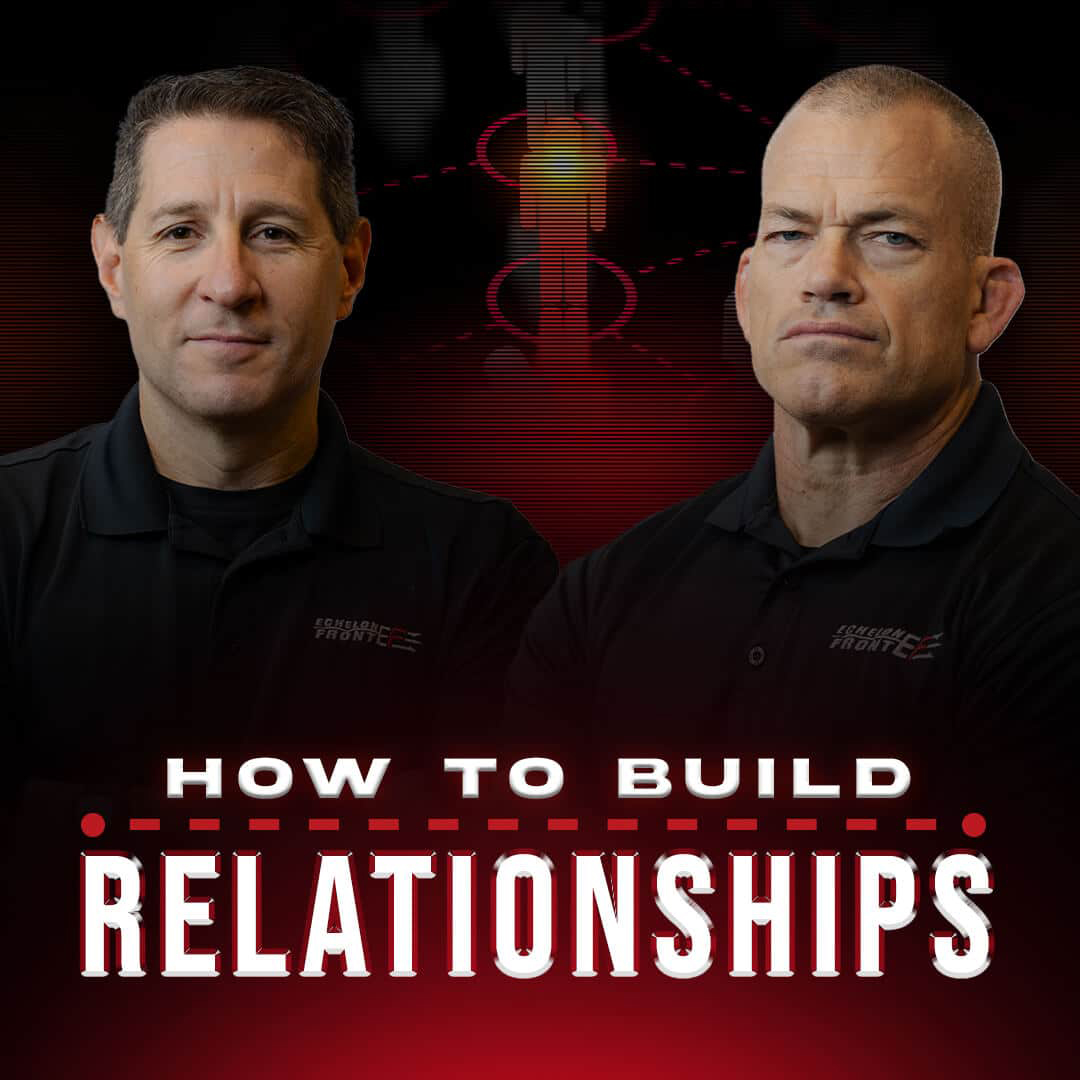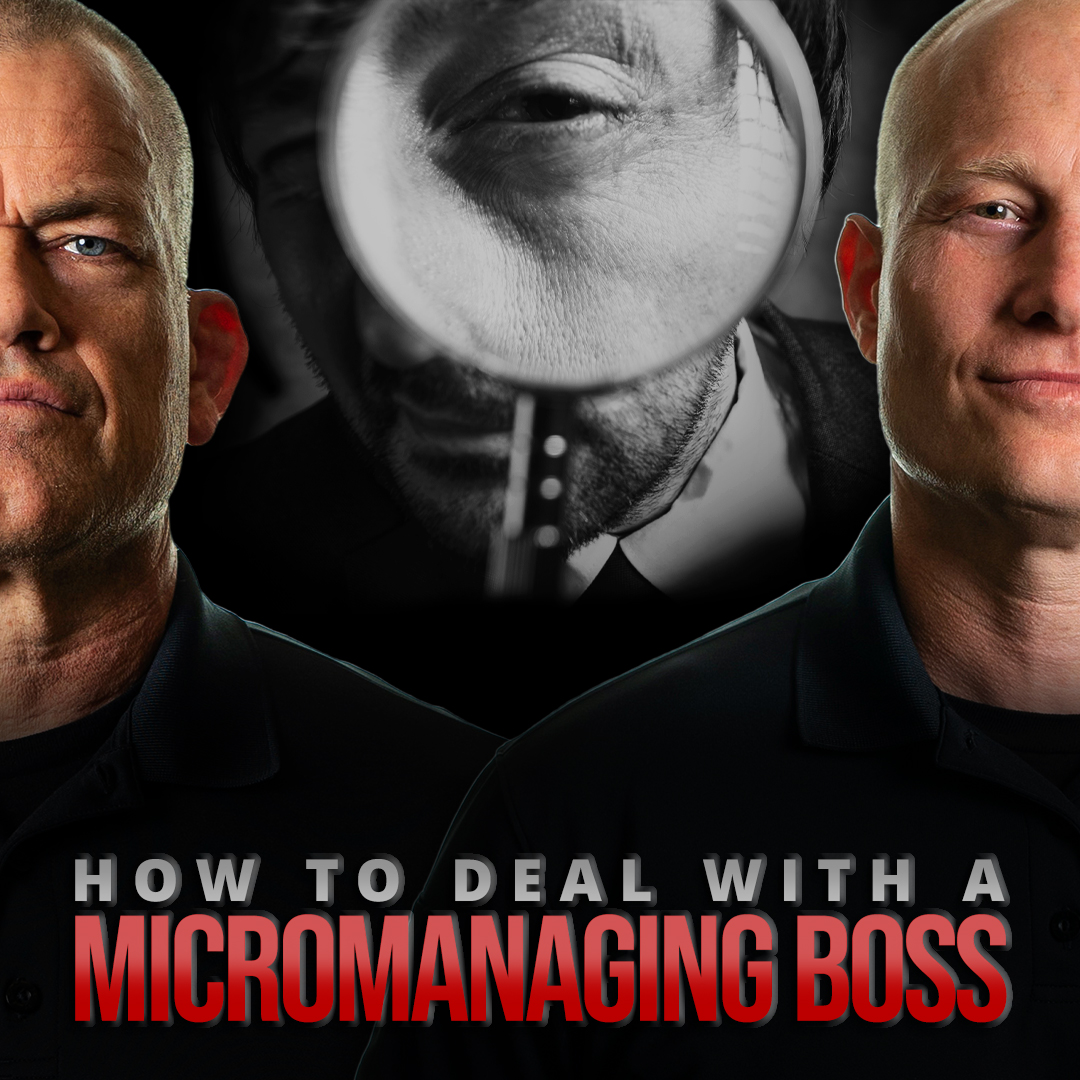The first Law of Combat is Cover and Move. Cover and Move is teamwork. Individuals and teams must mutually support one another, working together in order to accomplish the mission. How do you get individuals and teams to most effectively work together? The answer: build relationships.
In Extreme Ownership and The Dichotomy of Leadership, Jocko Willink and Leif Babin wrote about the powerful relationship between the U.S. Navy SEALs of SEAL Team Three Task Unit Bruiser’s Charlie Platoon and the U.S. Army Soldiers of Team Bulldog, Bravo Company, 1st Battalion, 37th Armored Regiment of the 1st Brigade, 1st Armored Division. I was the Bulldog company commander they wrote about and I can confirm that we did indeed have an exceptional battlefield relationship of mutual support between Soldiers and SEALs. When they called us for fire support, we mounted up in our tanks and delivered. When we asked them for sniper support, intelligence support, or anything else, they delivered. But that incredible relationship that allowed us to so effectively Cover and Move for each other didn’t start out that way.
In Chapter 11 of The Dichotomy of Leadership, Leif describes how his first efforts to form a relationship with me were dismissed. Frankly, I didn’t think I needed SEALs. I had two hundred Soldiers of my own, five main battle tanks, eight Bradley infantry fighting vehicles (small tanks), combat engineers, a forward aid station, a satellite communications team, and an Iraqi Army attachment. There was no situation I could envision where we would require additional support from Leif and Charlie Platoon, a small team of sixteen SEALs, two EOD bomb technicians, interpreters and a handful of Iraqi Soldiers. I was yet unaware of the extreme danger and difficulties that lay ahead for us in the Battle of Ramadi as Team Bulldog spearheaded the effort to take back from insurgents one of the most violent and dangerous areas of the city. It was also my ego that got in my way, as I questioned why we needed to work with an organization that was outside my chain of command. The SEALs didn’t work for me, or my boss, or even my boss’s boss. They had a separate Special Operations chain of command, which meant I wouldn’t have direct control over them and what they did. I saw that as a problem.
But I didn’t work for them either. Leif was willing to put aside organizational hierarchy in reaching out to me on the eve of the battle. My relationship with Leif started with his offer to help regardless of who was to lead or who was to support, as long as the mission was accomplished.
Building a relationship takes time. It’s a campaign, not a single engagement. From Leif’s first introduction, he continued to engage with me. He and his platoon were professional and kept their egos in check, unlike other special operators I’d worked with previously. It wasn’t long before I realized that he and his SEALs were an asset that could help me and my company, Team Bulldog, accomplish our mission. We were stronger together, as a result of mutually supporting efforts. When Team Bulldog became the main effort to establish a U.S. combat outpost in one of the most dangerous, enemy-held neighborhoods of Ramadi, Leif and his SEALs led the way, launching from U.S. Marine Corps boats on the nearby canal to seize the buildings and provide sniper support to cover my Soldiers as we moved into the area in our tanks and vehicles. Fighting alongside the SEALs, it took time and effort for me and my Soldiers to build trust and create a team that would eventually be able to seamlessly execute the tactic of Cover and Move to clear Al Qaeda-in-Iraq fighters and their insurgent allies from South-Central Ramadi.
Days and weeks in combat seem to compress time under the strain of continuous operations. Task Unit Bruiser’s SEALs and Team Bulldog Soldiers showed signs of silos breaking down and friendships formed after the most menial of tasks in moving sandbags. As we worked to fortify the combat outpost (called COP Falcon) in enemy territory which would be our home, my Soldiers continued to harden COP Falcon’s defenses for the next several weeks. Pallets of sandbags—tens of thousands of sandbags—were delivered at night via truckload and required my Soldiers to form a human chain to pass the sandbags from the truck into the buildings and up the stairwells to fill open windows and reinforce the walls of the machine gun positions on the rooftops under the cover of darkness. It was during one of the nightly sandbag chains that the SEALs returned to COP Falcon from a combat mission. They had been out in a sniper overwatch position in the Iraqi heat and under frequent enemy attacks for two full days. We could see the SEALs were in need of some rest, water and food. The last thing that my Soldiers expected was for the SEALs to drop their gear and join us in the human chain carrying the sandbags. They didn’t have to help us. But they did. To me and my Soldiers, it was a powerful demonstration of Cover and Move—the common purpose of mutual support. We were all part of the same team trying to accomplish the same strategic mission.
Leif and I didn’t imagine that moving sandbags would be the catalyst to cementing a lifelong bond between our teams. But the results were evident: silos were now completely removed, and each of our teams became far more effective as we pushed even greater distances into enemy held neighborhoods. Team Bulldog was able to take greater risks with our foot patrols, because Charlie Platoons SEALs (like American Sniper, Chris Kyle) manned sniper overwatch positions and disrupted enemy attacks on our Soldiers from the high ground. The SEALs were able to patrol farther into dangerous areas of Ramadi to conduct
reconnaissance patrols, raids and sniper missions, because they knew that Team Bulldog would do everything in our power to quickly render assistance and bring the thunder with our tanks when they needed it. With such a strong working relationship of mutual support, Team Bulldog and Charlie Platoon began to seamlessly Cover and Move for each other. As a result, our effectiveness increased exponentially and enabled all of us to be victorious in our ultimate goal to drive out the enemy insurgents, stabilize and secure South-Central Ramadi. Through this experience, we learned that relationships are far more important than the chain of command. Who is in charge of whom is of little consequence. It is strong relationships that enable teams to Cover and Move, accomplish the mission and win.
Now, as a leadership instructor for the Echelon Front Team, we work with a lot of companies and organizations that complain about having to work alongside other teams that don’t work for them. Whether it is two different departments within the company like sales and operations, or local law enforcement working alongside state or federal agencies, or a subcontractor supporting a business—there can be major frictions that impact performance, reduce the willingness to Cover and Move, and ultimately effect mission success. They, like me in my initial meeting with Leif, are concerned about working with a team over whom they don’t have direct control. But just as we learned in Ramadi, relationships are stronger than the chain of command. The key to effective Cover and Move is to build strong relationships with those you depend on to accomplish the mission, both inside and outside your chain of command. So, put your ego in check, be professional and build strong relationships through trust, professionalism and mutual support. Instead of demanding they support you, show them how you can and will support them. Remember, strong relationships don’t develop quickly. It’s a campaign, not a single engagement. Over time, these efforts will succeed and enable you to seamlessly Cover and Move for each other so that everyone can accomplish the mission and win.



